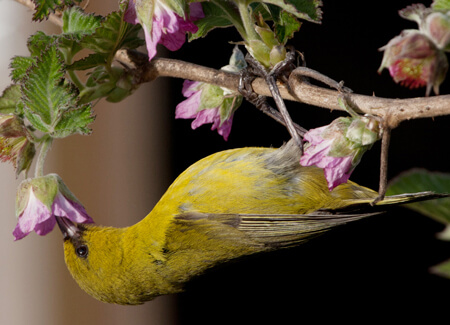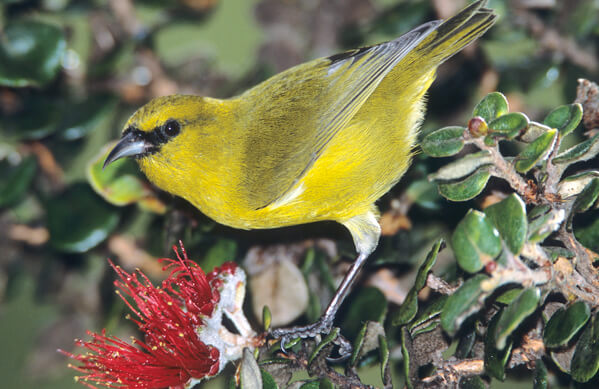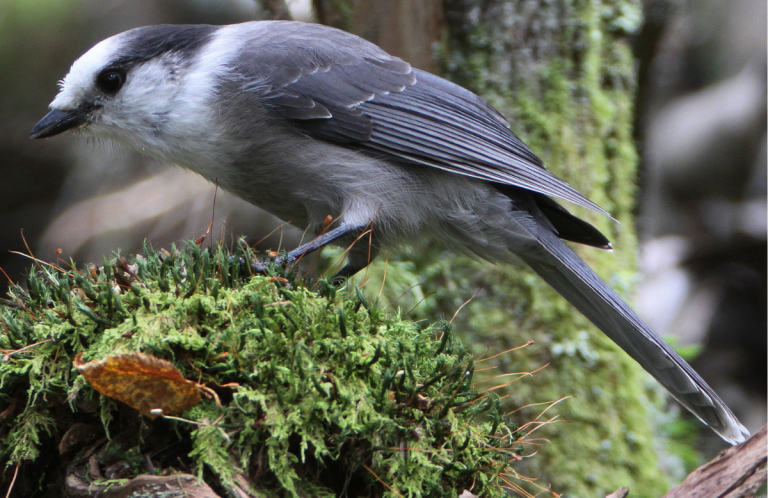
One of the most common and adaptable of Hawaiian honeycreepers, the Hawai‘i 'Amakihi is found in all types of habitat, from sea level to 9,500 feet. Its presence at lower elevations seems to indicate that this species is evolving a tolerance to avian malaria, a disease spread by non-native mosquitoes that has driven species such as the ‘I‘iwi, a spectacular red honeycreeper, to higher elevations.
Although Hawai‘i ‘Amakihi populations appear stable, the birds are susceptible to the same threats facing other Hawaiian birds, including habitat loss and predation by introduced mammals such as rats and free-roaming cats.
A Separate Species
The Hawai‘i ‘Amakihi is currently found on three Hawaiian Islands: the Big Island, Maui, and Molokaʻi. It formerly occurred on the island of Lanaʻi but has not been seen there since 1976.
Genetic studies continue to fine-tune the evolutionary history of Hawaiian forest birds. For example, the Hawai‘i, Kaua‘i, and O‘ahu ‘Amakihi were once considered subspecies under the larger classification of Common ‘Amakihi. Recent research led to the classification of the Kaua‘i, O‘ahu, and Hawai‘i ‘Amakihi as three separate species.
Sign up for ABC's eNews to learn how you can help protect birds
Flexible Feeders
Hawai‘i ‘Amakihis finds food in a variety of ways, successfully foraging even in altered or degraded habitats. They glean tree bark and foliage for spiders and insects with their decurved bills, drink tree sap, and sip nectar from native flowers, including ‘ohi‘a and mamane, with tubular tongues.
These flexible feeders also eat fruit pulp and juice, and readily drink the nectar of non-native flowers and trees.
Productive Parents
Females of this species build an open-cup nest of grasses, twigs, and leaves lined with softer material such as lichen, rootlets, and animal hair. Males participate in the chick-rearing process by bringing food to the nest for the female and chicks. Even after fledging, young ‘Amakihi remain dependent on their parents for several weeks.

Hawaiian 'Amakihi feeding. Photo by Robby Kohley
This productive species usually raises two broods in a season, with the male taking over feeding duties for the first brood as the female begins the second. Hawai'i ‘Amakihi pairs remain together for successive breeding seasons.
Help Keep 'Amakihi Afloat
Hawai‘i ‘Amakihi have benefited from conservation work for other birds, including rare species such as Palila and Maui Parrotbill. ABC has collaborated with in-country partners on this work, which includes fencing habitat to keep it free of predators; controlling invasive species; and restoring forests.
We recently joined with several partner groups to ask Congress to support that would provide increased funding for endangered endemic birds.
Together with our partners, we're undertaking many conservation projects in Hawai‘i—but much remains to be done. You can help by supporting our Hawaiian Birds campaign before August 8!
Donate to support ABC's conservation mission!



















































